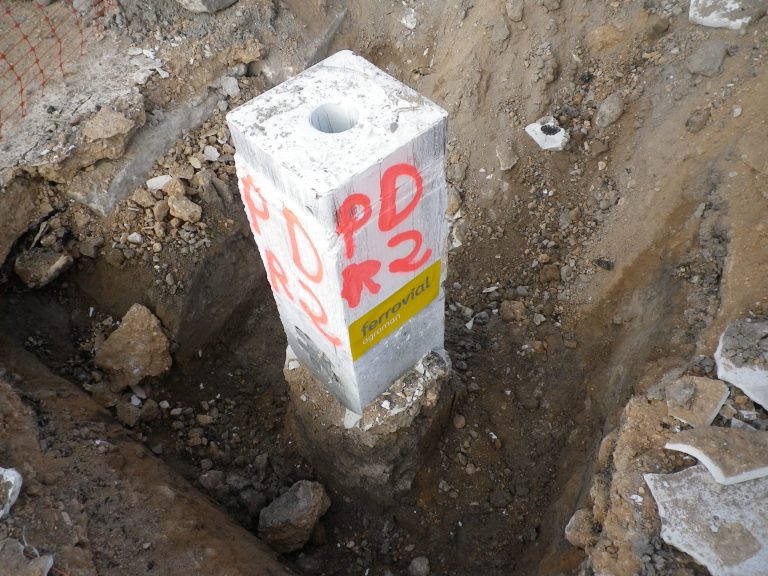
The Cuban poet José Martí (1853-1895) said that there are three things that every person should do during their lifetime: plant a tree, have a child, and write a book. Since I had already completed the first two tasks, I had a magnificent challenge ahead of me: writing a book.
As I’m not someone well-versed in literature, I settled on a goal that was more in line with my abilities: writing my doctoral thesis. On this path, I came across something I had never dreamed of: writing a patent.
The way I understand it, “writing a book” is to be able to transcend, leaving society with something that it can benefit from. My motivation to achieve this challenge was definite.
Patenting an idea is a tremendously complicated process. Once the patent has been registered, it is subjected to a thorough review to verify that its claims are totally original. The process is quite long…
Within geotechnics, I specialized in special foundations and terrain improvement techniques, and this is what I have dedicated most of my professional career to. In these fields, there are novelties in terms of machinery from time to time, but not new types of foundations or terrain improvement. Therefore, patenting something is unusual since it only happens rarely. Therefore, in addition to great personal satisfaction, this means prestige for the company, as it’s their own unique development in the world.
The shaft-grouted driven concrete pile combines the best of driven piles and micro piles. Its story starts in 2015, when we were looking for solutions for building in the carbonate sands (marés) of Palma de Mallorca. Eight years later, we have already used it in all kinds of soils, and it is part of the foundation in numerous structures.
A different idea and a new solution
Originally, the foundation for the Playa de Palma Hotel in Palma de Mallorca was designed with in situ piles. This type of pile is drilled, the reinforcement is placed, and they are concreted into the job site itself.
The difficulty lay in the fact that the ground on which the piles had to be built were carbonate sands, which have a very reduced shaft strength. I had already worked in this type of soil since they are also found in the North Sea, Australia, and Mexico, and I knew the challenges they posed.
Cast-in drilled piles are usually used to build in these locations: first, the drilling is done, and then the reinforcement is added along with the drilling system. Then, they are concreted, and finally, the shaft is inserted. The latter is done to give the piles more resistance.
Thinking about the conditions we were working in and the options we were managing, I came up with a new option: instead of making a cast-in drilled pile, why didn’t we try a shaft-grouted driven pile? The result was a pile with a square cross-section, a hollow inner shaft along its entire length, and a series of holes perpendicular to it equipped with non-return valves, which we could drive in and then inject.
By drilling along the shaft through the non-return valves with cement grout, we could increase the resistance along the pile shaft, so we could then reduce the length of the piles. To prove our idea, we carried out five piles at the workplace and subjected them to test loads. We managed to show that we could increase the resistance along the shaft by a factor of eight in this case.
The end result was that we went from having in situ piles with diameters of up to 1.25 meters and lengths of up to 39.00 meters to shaft-grouted driven concrete piles of up to 0.40 meters edgewise and lengths of up to 22.00 meters. The difference is considerable.

The main advantage of shaft-grouted driven concrete piles is that the length of the pile is greatly reduced. As a result, the execution time and the cost are also reduced.
After implementing this solution for the first time at the Playa de Palma Hotel, I presented the idea to Ferrovial’s R&D Management Committee. They decided to patent it, and that’s when a long and interesting process began, one that continues to this day.
The patent’s journey
The first place where we registered the patent was in Spain. The patent office conducted a thorough review, where they checked all the existing documentation about foundation techniques and analyzed the novelties presented in our idea. Finally, it was approved. We were granted the patent for the shaft-grouted driven concrete pile, which we can use for 25 years.
Having registered the patent in Spain, we had the right to extend it to the level of the European Union. This approval process was even longer and more complex because it analyzes anything similar in any of the member countries. We received questions from countries like Germany to ensure that our idea did not resemble others that already existed.
But none of these processes were as exhaustive as the one carried out in the United States. That country is quite protective, and they did extensive reviews on the shaft-grouted driven concrete pile to ensure it did not overlap with any other solutions patented previously. They sent us comments about patents registered in the year 1925…
To get an idea of the duration of the process, we filed the patent in Spain in January 2015, and it was approved in July 2016. In the United States, on the other hand, we presented it in January 2016, and it was not granted until December 2020. Five years of revisions!
Today, the shaft-grouted driven concrete pile is patented in every country where we work. In the European countries, the United States, Canada, Colombia, Chile, Australia…
Current situation
We have already used it in almost all types of soils: carbonate sands, silty sands, sandy silts, sands, gravels, volcanic pyroclasts… Depending on the type of soil where it is used, the shaft’s resistance can increase by a factor of 2 to 19.
In addition to building foundations, these piles have been used in wind turbines and fuel tanks, to name just a few examples.
A record in history
Patenting one’s own invention is, in a way, going down in history. In the field of foundations, it is unusual for there to be developments of this type: the last patent before ours had been registered many years prior.
For my company, having a patent of this type means significant prestige. We can tell our customers that we have a unique proprietary system that can greatly improve construction techniques and processes. In short, we can develop engineering solutions recognized worldwide.





There are no comments yet